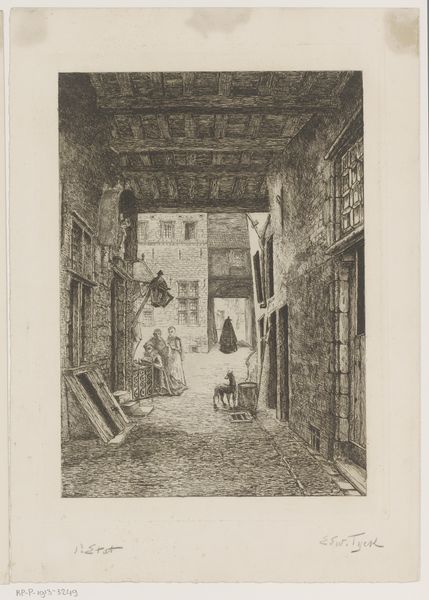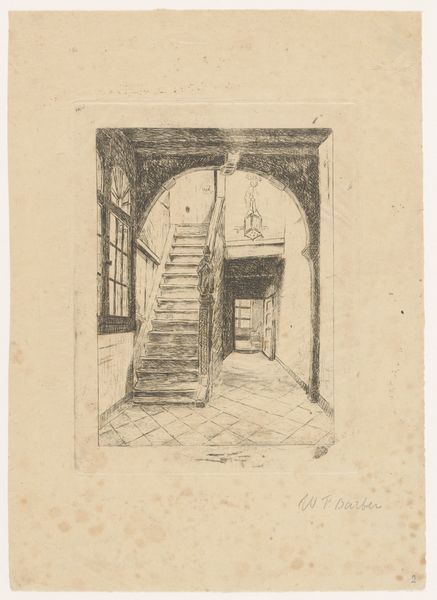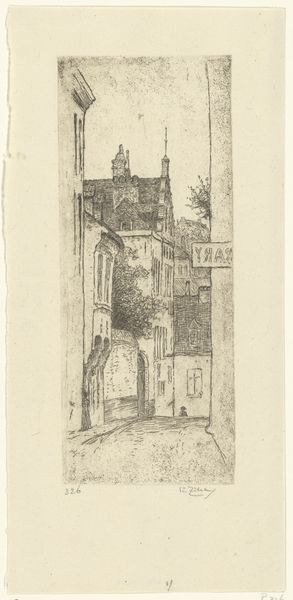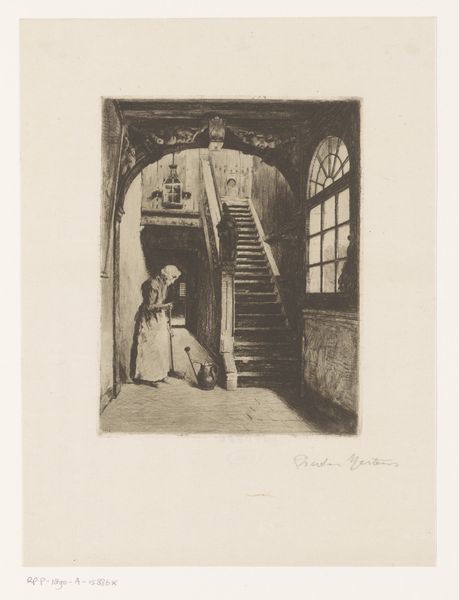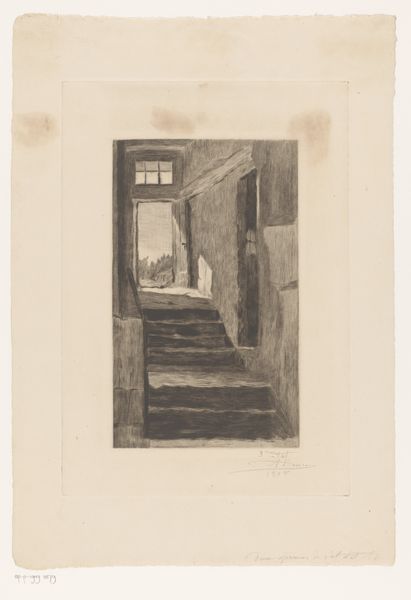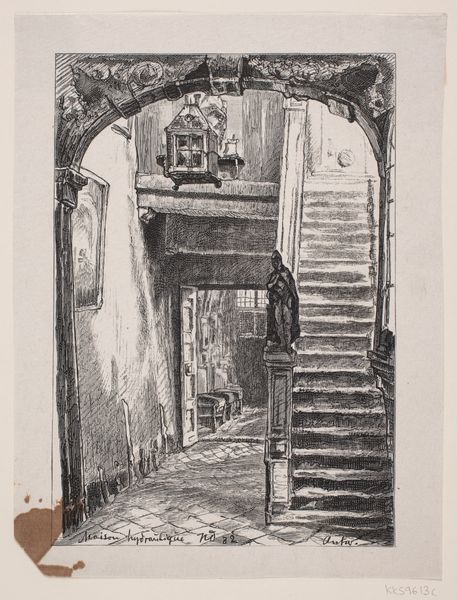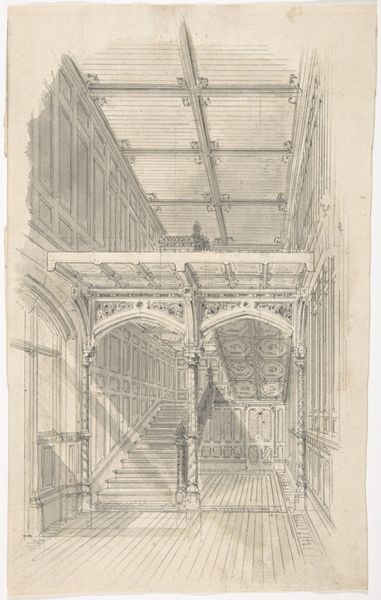
drawing, print, etching, ink
#
drawing
#
narrative-art
# print
#
pen sketch
#
etching
#
etching
#
ink
#
genre-painting
#
realism
Dimensions: height 137 mm, width 86 mm
Copyright: Rijks Museum: Open Domain
Curator: Look at this delicate etching by Henri Leys, dating somewhere between 1825 and 1869. It’s called "Staircase in the Brewers’ House in Antwerp," currently held at the Rijksmuseum. What do you make of it? Editor: Immediately, a sense of hushed expectancy. The stark contrast and the skeletal lines suggest secrets, almost as if we are spying on a clandestine encounter in a space caught between public display and private domain. Curator: You've nailed the feeling. I’m always struck by Leys’s knack for capturing these intimate domestic moments with such precision, especially in a space normally buzzing with activity. I almost imagine this building existing between moments, maybe a day where people don’t work. What do you make of the architectural setting itself? Editor: Absolutely, and I read that tension within a context of emerging bourgeois identities, the performance of status, the theater of domesticity… These grand, historical settings often functioned as stages upon which class distinctions were subtly but deliberately reinforced. Think about it; the details here--the stained-glass windows, elaborate banister-- all these whisper of affluence. But for whose eyes? Who gets to participate in its representation? Curator: A brewmaster, of course, but Leys doesn’t paint only that obvious reading. I suppose, maybe that figure receding through the doorway represents Antwerp's history-- an age when merchant class had such importance. It might be sentimental to suggest. Editor: Not at all sentimental, given the era. Realism, you see, doesn’t just mirror what’s immediately visible, it also captures underlying cultural moods. That isolated figure at the end almost underscores themes of displacement, too, a kind of subtle critique of class-bound performances? Who can access and navigate these spaces, then, became an important question. The image prompts me to ask how those boundaries become blurred or challenged. Curator: That’s insightful. What seems, on the surface, simply a quiet, somewhat gloomy interior sketch, resonates deeper. Editor: Indeed. It seems like a simple pen sketch, but it speaks volumes about the period's socio-economic context. And its endurance means those questions still endure, too. Curator: Absolutely, a small scene capturing bigger meanings. It also teaches about how small sketches, too, can tell us new stories of the past, the new always changing how we perceive of old works and spaces.
Comments
No comments
Be the first to comment and join the conversation on the ultimate creative platform.
